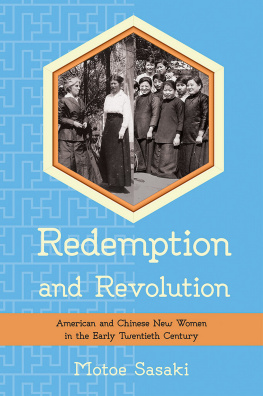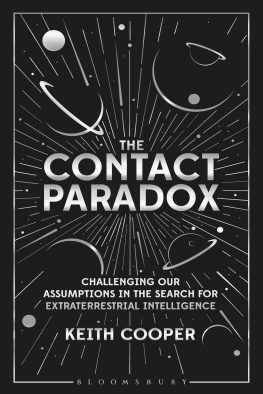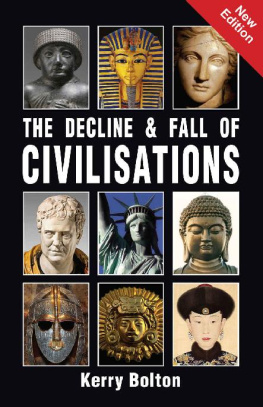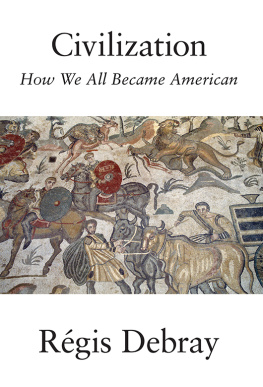ACKNOWLEDGEMENTS
Every creative endeavour I have ever embarked upon has drawn upon the talents of many people. In their own different ways both television documentaries and books are products of collaboration and discussion. On a project of such a scale and ambition of Civilisations that truism has been amplified and accentuated. Id therefore like to thank my fellow presenters Simon Schama and Mary Beard. From the BBC I would like to give special thanks to Janice Hadlow and offer my sincere gratitude to Mark Bell and Jonty Claypole.
The remarkable team at Nutopia who realised this ambitious project was led by Denys Blakeway, Michael Jackson and Mel Fall. I would also like to thank Jane Root. The producer whose endless hard work and insight made my films possible was Ian Leese who worked with talented colleagues Ewan Roxburgh, Isabel Sutton, Joanna Marshall, Jenny Wolf and Laura Stevens. I am also grateful to Matt Hill. Thanks too to the brilliant series consultants Julian Bell and Jonathan Jones, from whom I have learned much. The visual impact of the television series was the work of camera operators Johann Perry, Duane McLunie, Dirk Nel, Rewa Harr and Richard Numeroff. The finished films also owe much to the composing talents of Tandis Jenhudson.
Further thanks go to everyone at Profile Books: Penny Daniel for her patience and belief, Andrew Franklin for making this project possible, and my publicist Valentina Zanca; and to designer James Alexander at Jade Design and Lesley Hodgson for great picture research.
I am grateful, as always, to my agent Charles Walker. Finally, I would like to thank my family for tolerating absences and giving support.
AFTERWORD
During the summers of the 1970s and 80s my mother would take me and my siblings to the British Museum. There we would explore the whole array of cultural treasures on display but as a family we made a particular point of going to see the Benin Bronzes, which at that time were installed on a large landing of a main staircase. My mothers ambition was to ensure that her mixed-race, half-Nigerian children had access to the art and culture of both sides of their background and there, in front of the masterpieces of sixteenth- and seventeenth-century Benin, we felt kinship with our African forefathers, with the craftsmen who had created these incredible plaques that once decorated the royal palace of the Oba. Photographs of Benin art hung in frames on the walls of our council house and the knowledge that our African ancestors, as well as our European ones, had created great art and formed sophisticated civilisations was a truth that I cannot recall ever not knowing.
My appreciation and love for the art and culture of Europe was primarily acquired not through visits to museums and galleries, however, but was gifted to me by another medium television. My personal epiphany came on 12 February 1986 when my mother made me watch a documentary on BBC 2 called Artists and Models. Over the space of sixty minutes I consumed the art and the incredible life of Jacques-Louis David, the master of French Neo-Classicism. I was enthralled. With the fanaticism of a new convert, I began to borrow books on art from the nearby library. As Artists and Models had been as much about history as art my passion for both was ignited, and my youthful and all too boyish obsession with World War Two waned.
Two years later, having worked in shops at weekends and during school holidays, I had saved up enough money to go travelling across Europe. As well as lying on beaches and meeting up with friends, I visited the great art galleries in all the cities I passed through. At eighteen I stood in the Louvre in front of the paintings I had seen on the BBC. On Artists and Models a contemporary writer had said the paintings of Jacques-Louis Davids were so austere that a cold wind could almost be felt blowing out from his canvases. I recall standing in front of Davids Oath of the Horatii hoping to feel that icy blast on my cheeks. The idea that art was going to be part of my life was new and exciting, a wonderful gift bestowed by my mothers careful efforts to inspire. After Paris I went to Amsterdam and to the Rijksmuseum where I saw for the first time the works of Rembrandt, Vermeer, Frans Hals and the other Dutch Masters. Next came Madrid and the Museo del Prado where I was exposed to Titian, El Greco, Picasso, Velzquez and Hieronymus Bosch. In the gift shop at the Prado I bought a reproduction of Boschs The Garden of Earthly Delights. It was an object I could ill afford, and I treasured it for many years, hanging it on the wall of every student room.
The spark that changed my life had reached me through the thick screen of our boxy, rented television, more than thirty years ago. Not that I knew it at the time, the television documentaries that I watched were part of a tradition that had been given shape and momentum by a series broadcast the year before my birth. Kenneth Clarks thirteen-part series Civilisation is part of television legend, both in Britain and the United States. The series changed lives for many of the millions who watched it, just as Artists and Models later did for me. Colour television had been introduced in Britain just two years earlier and the colour sets needed to truly appreciate the series were rare. Households wealthy enough to have been able to afford one threw Civilisation parties, inviting friends who would otherwise have had to contemplate the wonders of European art in black and white. For thirteen consecutive weeks, with Kenneth Clark as their guide, audiences were transported to 117 locations. During those three months, curators of art galleries and museums reported an increase in visitor numbers. Later, during the summer of 1969, there were reports of a boom in tourist numbers, as thousands of people travelled to France, Italy and elsewhere to visit galleries and see for themselves the masterpieces of art and architecture that Kenneth Clark had brought to their living rooms.
This book accompanies a television series inspired by Civilisation. Almost fifty years after it was broadcast Kenneth Clarks series remains famous, and rightly so. Yet Civilisation is famous not just for the unprecedented impact it had on those who watched it but also for the narrowness of its focus. It told the story only of European art and culture, predominantly that of Italy and France. Filming took place in a mere eleven countries. Germany played a supporting role in the narrative. Britain had only a bit part. The art of Spain was omitted completely, causing genuine offence in Madrid. Kenneth Clark should, of course, not be judged on one series alone. In his expansive writings he displayed a world view that was far broader; he was a lifelong champion of Japanese art for example. Yet even on the page, art for Clark remained a mostly male pursuit. The lack of female artists in Civilisation is striking to modern viewers.
Clark was inspired to take part in the series when the word civilisation was used at the BBC meeting to which he had been invited. It was that word, above all other considerations, that fired his imagination and inspired him to become the presenter and author of the project. In the very first scene of the series Clark famously toyed with the meaning of the word. Stood in front of the Notre-Dame Cathedral he playfully asked What is civilisation? I dont know but I think I can recognise it when I see it.
Clark could be less hesitant when making judgements about the various civilisations of the world or the cultural imaginations of the peoples who had forged them. In the book he wrote to accompany the series a passage appears that is not in the broadcast script of the programme. Comparing an African mask that had belonged to critic and Bloomsbury artist Roger Fry to the head of the Apollo Belvedere, Clark wrote,








